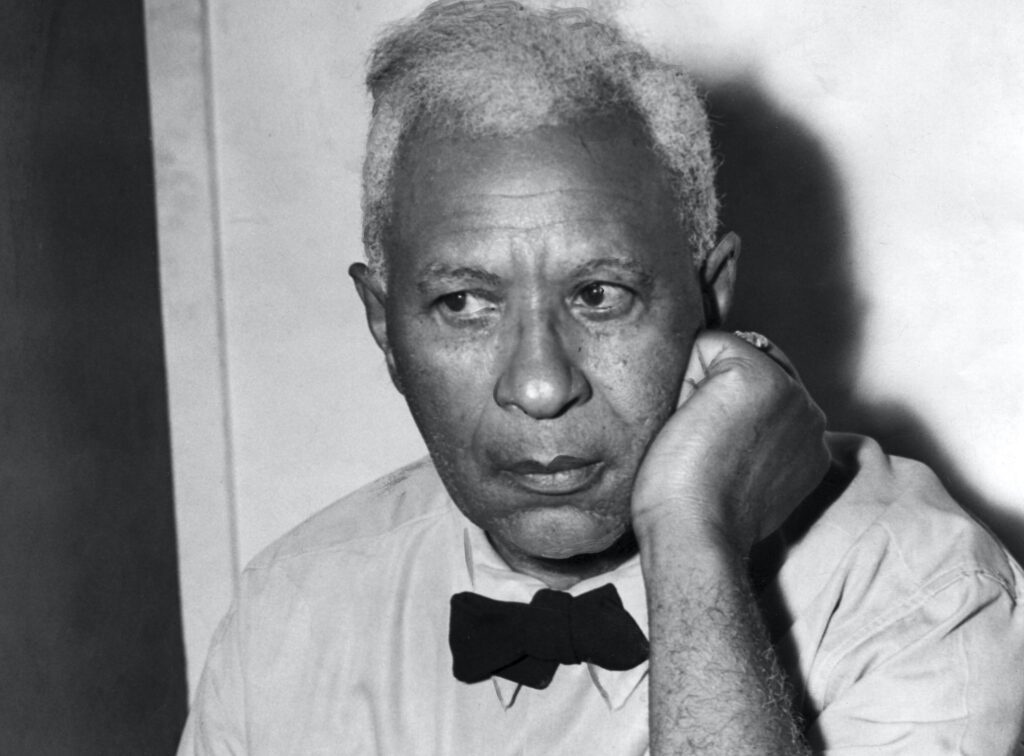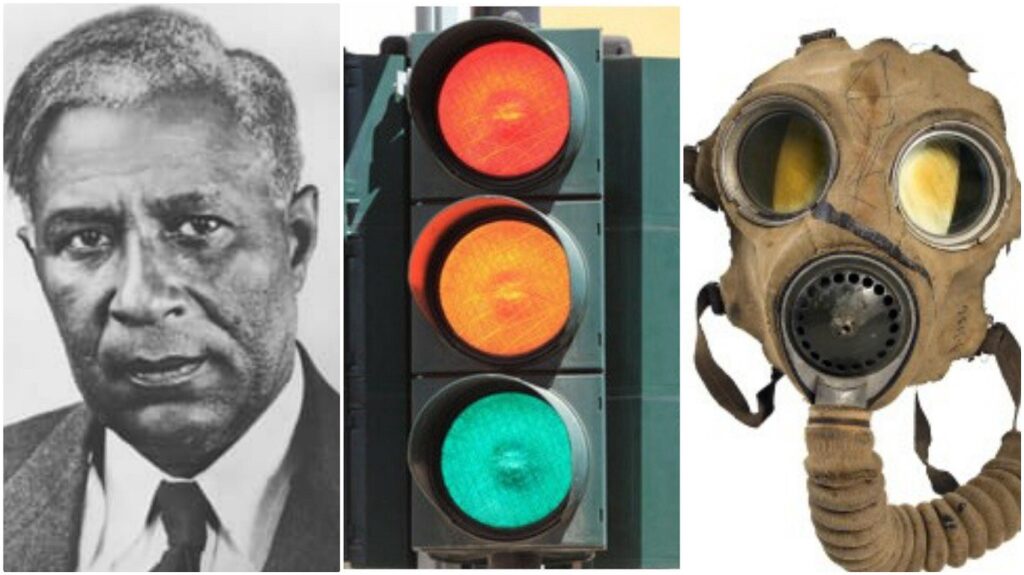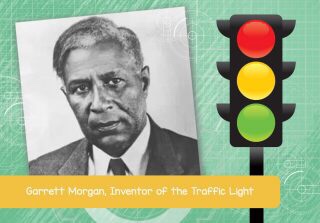Meet the African American who invented Traffic Light(Read More)
Amazingly, the same African American in 1916 patented his version of the gas mask. Find out more about the amazing African American inventor. Early Life On March 4, 1877, T Garrett Augustus Morgan was born in Claysville, Kentucky. His mother was of Native American, Black, and white origin (her father was a clergyman named Rev….
Amazingly, the same African American in 1916 patented his version of the gas mask. Find out more about the amazing African American inventor.
Early Life
On March 4, 1877, T Garrett Augustus Morgan was born in Claysville, Kentucky. His mother was of Native American, Black, and white origin (her father was a clergyman named Rev. Garrett Reed), while his father was an African American and the son of Morgan’s Raiders’ Civil War leader, Confederate Colonel John Hunt Morgan. Garrett was the seventh of eleven children, and he spent his early years attending school and working on the family farm alongside his siblings. He left Kentucky as a teenager and relocated to Cincinnati, Ohio, in pursuit of opportunity.
Morgan’s formal education never extended beyond elementary school, but he worked to educate himself, finding a tutor in Cincinnati and continuing his study of English grammar. Morgan relocated to Cleveland, Ohio, in 1895, where he began working as a sewing machine repairman for a clothing manufacturer.

He taught himself as much as he could about sewing machines and experimented with the technique. His experiments and competence in repairing things quickly spread, and he worked for various manufacturing companies in the Cleveland region.
In 1907, the inventor founded a store that sold and repaired sewing equipment.
It was the first of many businesses he would create. In 1909, he extended his business to include a tailoring shop with 32 employees. The new company produced jackets, suits, and gowns, all of which were sewed with equipment that Morgan created.
Marriage and Family
In 1896, Morgan wed his first wife, Madge Nelson; they divorced in 1898. In 1908, he married Mary Anna Hasek, a Bohemian seamstress; it was one of Cleveland’s earliest interracial weddings. John P., Garrett A. Morgan Jr., and Cosmo H. Morgan were their three children.
Early Gas Mask

Morgan was granted two patents in 1914 for his design of the Safety Hood and Smoke Protector, an early gas mask. He manufactured and sold the mask nationally and globally through the National Safety Device Company, or Nadsco, adopting a marketing technique to avoid Jim Crow discrimination—what historian Lisa Cook refers to as “anonymity by dissociation.” Historically, entrepreneurs sold their innovations through live demonstrations. Morgan represented himself to the general public, local fire departments, and city officials as his own aide, a Native American man named “Big Chief Mason,” at these events. Morgan employed whites, including public safety personnel, to arrange demonstrations for him throughout the South. His newspaper adverts featured well-dressed male models of white race.
Popularity of the gas mask was demonstrated by the rapid adoption of the mask by New York City and the subsequent adoption by 500 communities. A refined form of Morgan’s gas mask won a gold medal at the International Exposition of Sanitation and Safety and another gold medal from the International Association of Fire Chiefs in 1916.
The Lake Erie Crib Disaster
Morgan made national headlines on July 25, 1916, for wearing his gas mask to rescue individuals trapped in an underwater tunnel 250 feet underneath Lake Erie during an explosion. No one had been able to reach the men; eleven of them and 10 others who attempted to rescue them had perished. Six hours after the event, in the middle of the night, Morgan and a team of volunteers donned the new “gas masks” and rescued two workers while recovering the dead of 17 others. He administered artificial respiration to one of the men he saved himself.
After that, the company of Morgan received several calls from fire departments across the nation wishing to purchase the new masks. However, images of him appeared in the national news, and officials in a number of southern areas rescinded their orders upon learning he was black.
In 1917, the Carnegie Hero Fund Commission investigated accounts of bravery demonstrated after the catastrophe. The Carnegie board decided to give the renowned “Hero” award to a white minor figure in the rescue effort, rather than to Morgan, based on press reports that minimized his contribution. Morgan complained, but the Carnegie Institution stated that he had taken less danger than the other individual because he was equipped with safety equipment.
Some reports claim that the Morgan gas mask was developed and deployed in World War I when the Germans employed chemical warfare at Ypres on April 22, 1915, although there is no solid evidence to support this claim. Despite Morgan’s success in the United States, there were hundreds of other masks on the market by that time, and the majority of masks used in World War I were made in England or France.
The Morgan Traffic Signal

Morgan entered the newspaper industry in 1920 when he founded the Cleveland Call. As the years passed, he became a rich and highly regarded businessman who was able to purchase a home and a 1903 Henry Ford automobile. Morgan was the first African American to acquire a car in Cleveland, and it was his experience driving through the city’s streets that led him to create an upgrade to traffic signals.
Morgan invented a traffic signal after witnessing a crash involving an automobile and a horse-drawn carriage. While earlier innovators had experimented with, sold, and even patented traffic signals, Morgan was among the first to apply for and obtain a U.S. patent for a low-cost method of producing traffic signals. On November 20, 1923, the patent was awarded. Morgan also patented his idea in the United Kingdom and Canada.
The traffic signal at Morgan was a T-shaped pole unit with three positions: Stop, Go, and an all-directional stop position. This “third position” paused vehicles in all directions to facilitate safer pedestrian crossings.
Morgan’s hand-cranked semaphore traffic control device was utilized throughout North America until all manual red-, yellow-, and green-light traffic signals were replaced by the automatic red-, yellow-, and green-light traffic signals currently in use worldwide. The inventor sold his traffic signal patent to the General Electric Company for $40,000.
Different Inventions

Morgan was constantly experimenting to discover new thoughts throughout his life. Although the traffic signal was designed at the height of his career and became one of his most well-known inventions, it was only one of several he created, manufactured, and marketed over the years.
Morgan designed a manual sewing machine attachment for zigzag stitching. In addition, he developed a company that manufactured personal grooming items such as hair-dying ointments and the curved-tooth pressing comb.
As the news of Morgan’s life-saving inventions traveled throughout North America and England, the demand for these items increased. He was regularly asked to demonstrate the functionality of his innovations at conventions and public displays.
Death
Morgan, like many others, lost the majority of his wealth in the stock market crash, but this did not dampen his inventiveness. At the time of his death, despite having developed glaucoma, he was still working on a new invention: a cigarette that extinguishes itself.
Morgan passed away on August 27, 1963, at age 86. Both during and after his lifetime, his creative energies were acknowledged.
Legacy
The inventions of Morgan have had a significant impact on the safety and well-being of people all over the world, including miners, soldiers, first responders, ordinary automobile owners, and pedestrians. His weekly newspaper, originally titled the “Cleveland Call” and now titled the “Cleveland Call and Post,” is another enduring legacy. His accomplishments as the son of former slaves, against all difficulties and despite Jim Crow-era discrimination, are impressive.
Source: ThoughtCo